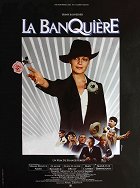Réalisation:
Francis GirodScénario:
Georges ConchonPhotographie:
Bernard ZitzermannMusique:
Ennio MorriconeActeurs·trices:
Romy Schneider, Marie-France Pisier, Claude Brasseur, Jean-Claude Brialy, Jean Carmet, Jean-Louis Trintignant, Jacques Fabbri, Daniel Auteuil (plus)Résumés(1)
Emma Eckhert, issue d'un milieu modeste, réussit, dans l'entre-deux-guerres, une fulgurante ascension et se trouve à la tête d'une banque et d'un journal financier spécialisé dans l'épargne populaire. Elle sera victime d'une machination politico-financière. (texte officiel du distributeur)
Critiques (1)
Romy Schneider and Jean-Louis Trintignant already met in a number of films in the past, and most recently in The Lady Banker. This enjoyable story of one woman who made a business out of the basic need for luxury takes place between 1908 and 1931 (some sources go as far back as 1886-1935), giving Romy a great opportunity to interpret Emma Eckhert during a significant period of her life. In terms of the formal aspects, the film is very effortless, the art nouveau opening is in black-and-white, the individual plot chapters are bridged by would-be retro montages, there is no shortage of fabricated Pathé Journal pieces, and of course there are the ever-present front-page headlines. In terms of believability, The Lady Banker goes much further than previous films with Romy that took place during or before World War II, but there is much more needed in order to portray the reality. However, Romy did not live to see the modern era, which is often characterized by precise settings, and this was as good as it could be in her time. Today, The Lady Banker ranks among the top historical films Romy made during her second career in France. Those of you who prefer films based on the face of a single woman will be fully satisfied because all the other characters are nowhere near as good as Romy.
()

